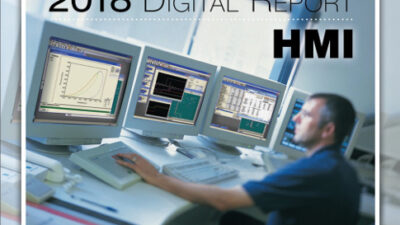San Antonio, TX—Projected growth in Eastern Europe’s developing electric drives market is being driven by improved customer acceptance, robust demand in key regions, technology advances, and more competitive prices, according to recent research by Frost & Sullivan.
San Antonio, TX— At an estimated $115.2 million, Eastern Europe’s developing electric drives market is less than a tenth the size of its counter part in Western Europe. However, improved customer acceptance, robust demand in key regions, technology advances, and more competitive price are creating the potential for strong growth in this market, according to recent research by Frost & Sullivan .
As manufacturers tell customers about the advantages of modern drive technology, such as superior performance, reliability, efficiency and energy savings, awareness of drive technology and investment in it is likely to increase.
Presently, only a small percentage of motors in Eastern Europe are used with electric drives technology. This situation gives manufacturers the chance to sell drives to motor-owners that have yet to install this technology. As a result, targeted customer education programs, aimed at boosting understanding of drive technology, are critical to encouraging demand from these prospective end-users.
In addition, the recent addition of eight Eastern European nations to the European Union (EU) is also expected to fuel expansion of the drives market. ‘The accession states are expected to benefit from a series of factors including improved access to markets, simpler trade, rising industrialization and greater power as part of a major trading block,’ says Mik Sabiers, Frost & Sullivan’s research manager. ‘These factors should act to support investment in more advanced technologies, resulting in an increased installed base of drive solutions.’
The units shipped portion of the drives market is expected to grow just over 10% per year from 2003 to 2010. Annual revenues during the same period are projected to grow by 7.1% annually with total market revenues likely to reach $185.8 million in 2010.
Accounting for just over 40% of total market revenues at present, Poland is expected to remain the key region in terms of total size and demand. Still, a broadening end-user base, enhanced customer understanding, and deeper penetration of drive solutions across the industrial base are projected to support overall increase in all regions. The survey also found that the region with the most revenue growth is forecast to be Slovenia with smaller markets such as the Baltic States also anticipated to advance strongly.
User interest continues to grow, even as drives become steadily more compact, understandable, reliable, and interchangeable. At the same time, leading manufacturers are attempting to further develop their overall product lines. Such technological advances are expected to sustain heightened demand for drives and motivate more replacement and upgrade programs.
With average price levels declining and end-users becoming more understanding of the benefits of drive technology, Frost & Sullivan adds that a wider customer base is likely to start investing in the technology. Despite falling price levels, however, limited funds in many sectors of the user base are likely to dampen uptake levels. ‘As customers look for the latest drive solutions with no commensurate increase in price levels, price pressures are expected to continue to build, manufacturers will need to focus on various strategies to hold on to their current user base,’ says Sabiers.
In addition, the ac segment is likely to strengthen its domination over total market revenues, and is poised to increase to nearly 95.5% during from 2003 to 2010. Demand for dc drives is expected to become increasingly focused and specialized, with revenues for this sector an-ticipated to fall from $9.2 million to $8.4 million during the same time period.
Not surprisingly, most suppliers in Eastern Europe’s fragmented electric drives market are active in the more lucrative ac drives segment. Leading suppliers include ABB and Siemens, while Danfoss, STI and Vacon also occupy good niche area positions. Customer loyalty remains low causing constant flux in competitor standing.
Competitive pressures are expected to intensify as more manufacturers are attracted by the region’s good growth potential. ‘The key drivers of competition are price, service, specialization and research and development. Across the region, users are looking for drives that provide high quality performance, good efficiency gains, and overall cost saving. Manufacturers able to meet these needs are expected to gain share,’ concludes Sabiers.
Control Engineering Daily News Desk
Jim Montague, news editor
[email protected]


